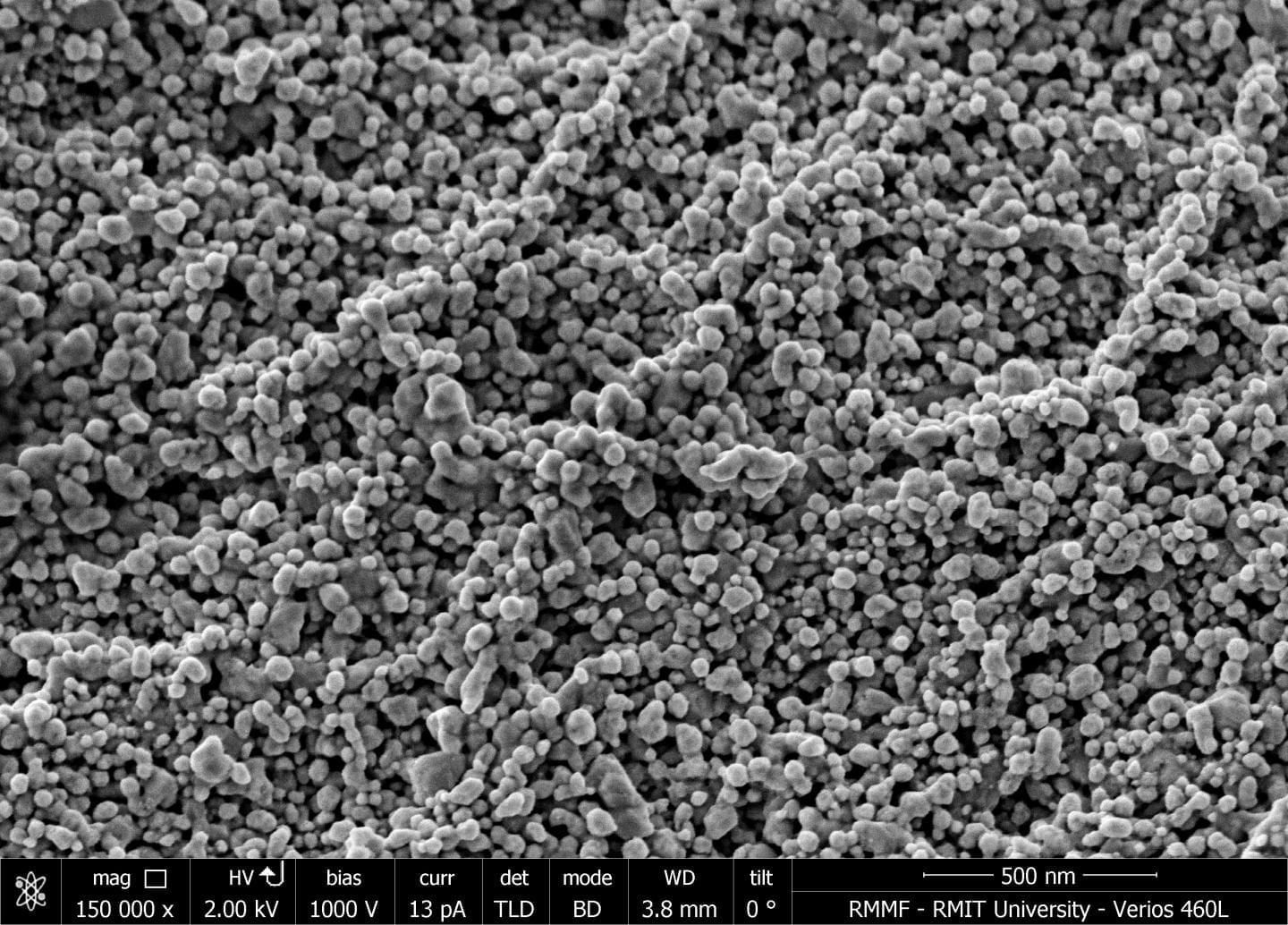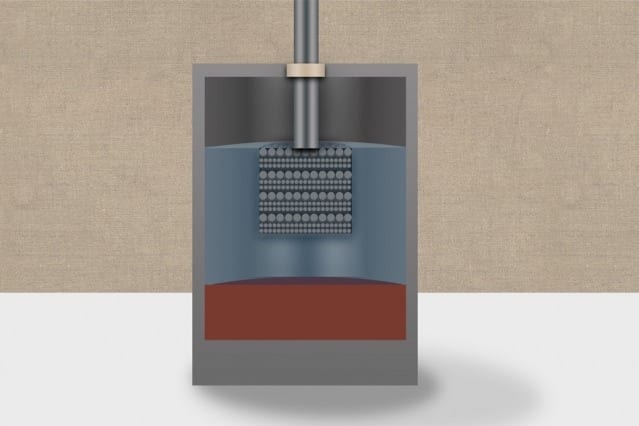
CREDIT
NASA Ames Research Center
New method can deposit nanomaterials onto flexible surfaces and 3-D objects
Printing has come a long way since the days of Johannes Gutenberg. Now, researchers have developed a new method that uses plasma to print nanomaterials onto a 3-D object or flexible surface, such as paper or cloth. The technique could make it easier and cheaper to build devices like wearable chemical and biological sensors, flexible memory devices and batteries, and integrated circuits.
One of the most common methods to deposit nanomaterials–such as a layer of nanoparticles or nanotubes–onto a surface is with an inkjet printer similar to an ordinary printer found in an office. Although they use well-established technology and are relatively cheap, inkjet printers have limitations. They can’t print on textiles or other flexible materials, let alone 3-D objects. They also must print liquid ink, and not all materials are easily made into a liquid.
Some nanomaterials can be printed using aerosol printing techniques. But the material must be heated several hundreds of degrees to consolidate into a thin and smooth film. The extra step is impossible for printing on cloth or other materials that can burn, and means higher cost for the materials that can take the heat.
The plasma method skips this heating step and works at temperatures not much warmer than 40 degrees Celsius. “You can use it to deposit things on paper, plastic, cotton, or any kind of textile,” said Meyya Meyyappan of NASA Ames Research Center. “It’s ideal for soft substrates.” It also doesn’t require the printing material to be liquid.
The researchers, from NASA Ames and SLAC National Accelerator Laboratory, describe their work in Applied Physics Letters, from AIP Publishing>.
They demonstrated their technique by printing a layer of carbon nanotubes on paper. They mixed the nanotubes into a plasma of helium ions, which they then blasted through a nozzle and onto paper. The plasma focuses the nanoparticles onto the paper surface, forming a consolidated layer without any need for additional heating.
The team printed two simple chemical and biological sensors. The presence of certain molecules can change the electrical resistance of the carbon nanotubes. By measuring this change, the device can identify and determine the concentration of the molecule. The researchers made a chemical sensor that detects ammonia gas and a biological sensor that detects dopamine, a molecule linked to disorders like Parkinson’s disease and epilepsy.
But these were just simple proofs-of-principle, Meyyappan said. “There’s a wide range of biosensing applications.” For example, you can make sensors that monitor health biomarkers like cholesterol, or food-borne pathogens like E. coli and Salmonella.
Because the method uses a simple nozzle, it’s versatile and can be easily scaled up. For example, a system could have many nozzles like a showerhead, allowing it to print on large areas. Or, the nozzle could act like a hose, free to spray nanomaterials on the surfaces of 3-D objects.
“It can do things inkjet printing cannot do,” Meyyappan said. “But anything inkjet printing can do, it can be pretty competitive.”
The method is ready for commercialization, Meyyappan said, and should be relatively inexpensive and straightforward to develop. Right now, the researchers are designing the technique to print other kinds of materials such as copper. They can then print materials used for batteries onto thin sheets of metal such as aluminum. The sheet can then be rolled into tiny batteries for cellphones or other devices.
Learn more: Printing nanomaterials with plasma
The Latest on: Printing nanomaterials
[google_news title=”” keyword=”printing nanomaterials” num_posts=”10″ blurb_length=”0″ show_thumb=”left”]
via Google News
The Latest on: Printing nanomaterials
- New War Technologies and International Lawon May 2, 2024 at 3:12 am
Some applications of nanomaterials by the military are both powerful and subtle, and have neurological and biological applications: 'devices that can infiltrate electronics and seize control at ...
- Researchers explore nano-printing for smart textileson May 2, 2024 at 2:35 am
Described as ‘nano-printing’, the technology involves integrating functional nano-materials directly into textile fibres to produce ‘smart clothing’ that avoids the use of bulky components that can ...
- U of T Engineering researcher Peter Serles named 2024 Schmidt Science Fellowon April 25, 2024 at 9:45 am
Serles (MIE MASc 1T9, MIE PhD candidate) plans to build a platform to study brain disease, damage and treatment methods with high speed and low costs ...
- Advances in Materials and Processing Improve 3DP Resultson April 10, 2024 at 5:00 pm
Georgia Tech has created a Makerspace hub for AI teaching and research. In recent years, 3D printing as a manufacturing process has advanced at a remarkable rate. The changes in the acceptance of 3DP ...
- Nanocarbon: The Building Blocks of Advanced Carbon Nanomaterialson April 1, 2024 at 12:09 am
Carbon nanomaterials can include more complex structures and composites ... The integration of nanocarbon materials with other emerging technologies, such as 3D printing, flexible electronics, and ...
- Nanomaterials newson March 14, 2024 at 5:00 pm
At first glance, biodegradable materials, inks for 3D printing and aerogels don't seem to have much in common. All three have great potential for the future; however, "green" materials do not ...
- Fiber-reinforced 3D printing material brings sustainability, versatilityon February 20, 2024 at 4:00 pm
Three-day hands-on workshop from June 11-13 in Leuven, Belgium, will equip participants with a better understanding of fiber optic sensing technology for digital manufacturing of composite tanks.
- Introduction to Graphene-Based Nanomaterialson October 24, 2023 at 4:26 pm
Touqeer, Muhammad Baig, Mirza Mahmood Aadil, Muhammad Agboola, Philips O. Shakir, Imran Aboud, Mohamed F. Aly and Warsi, Muhammad Farooq 2020. New Co-MnO based Nanocrsytallite for photocatalysis ...
- Environmental risks of nanomaterialson February 27, 2023 at 4:08 pm
Rising production and use of engineered nanomaterials increases the likelihood of environmental exposure. A preliminary modelling study shows that quantitative risk assessment is possible but a ...
via Bing News










